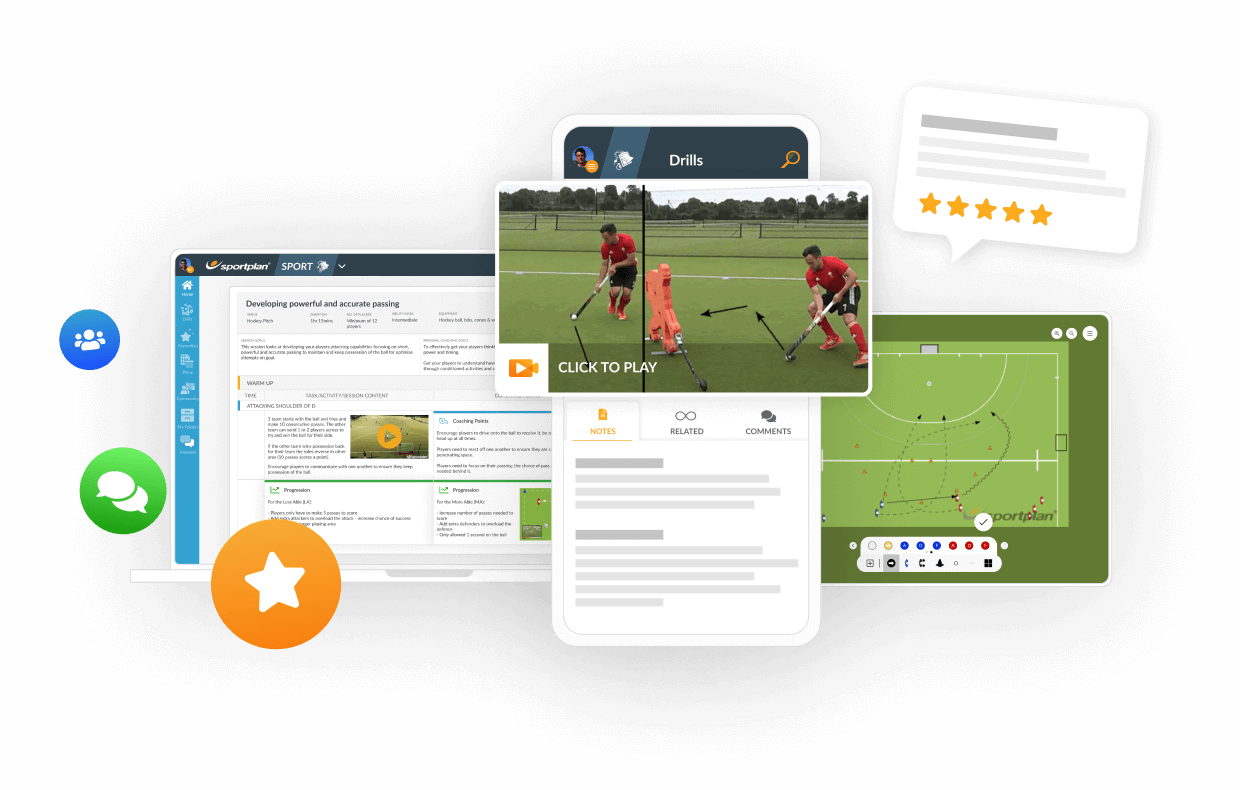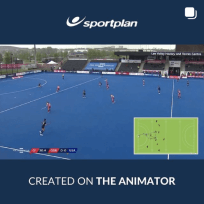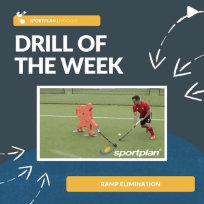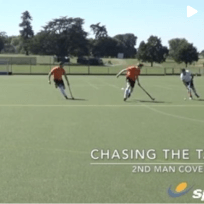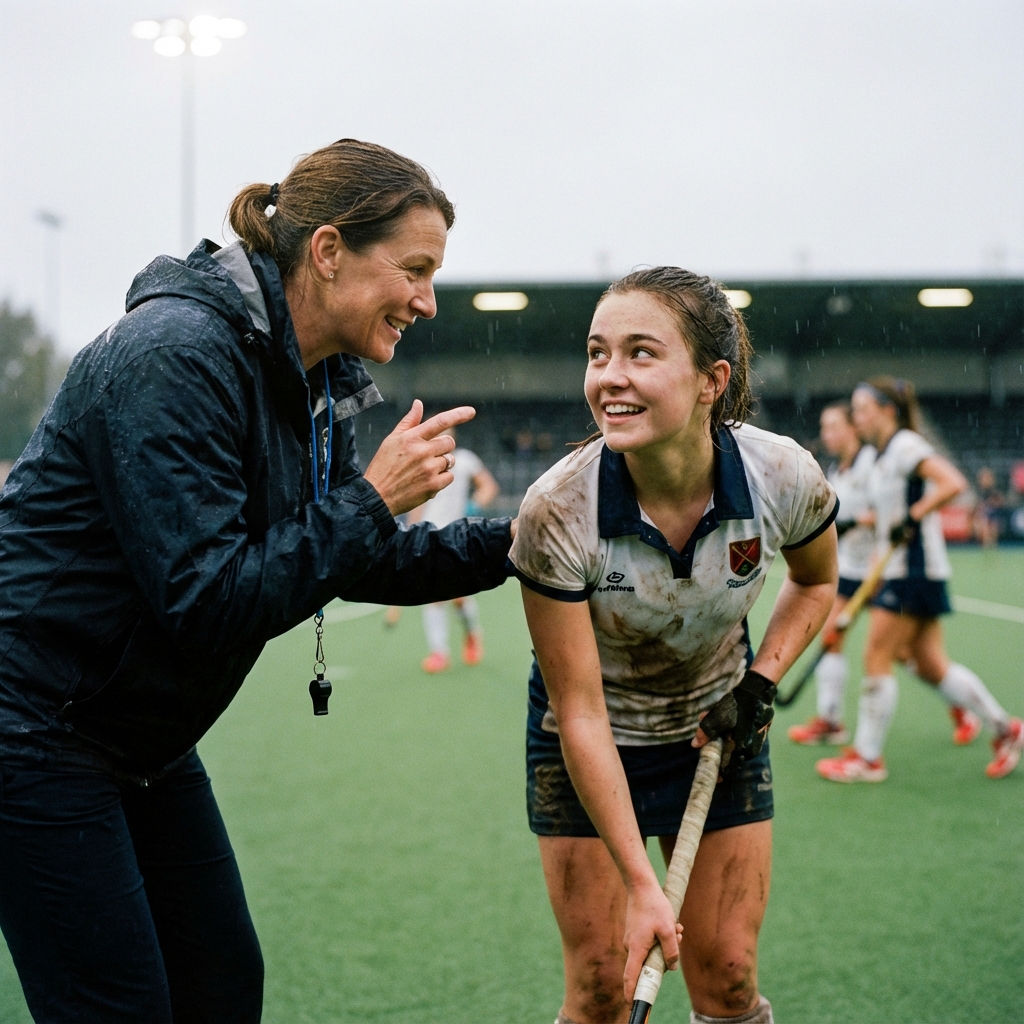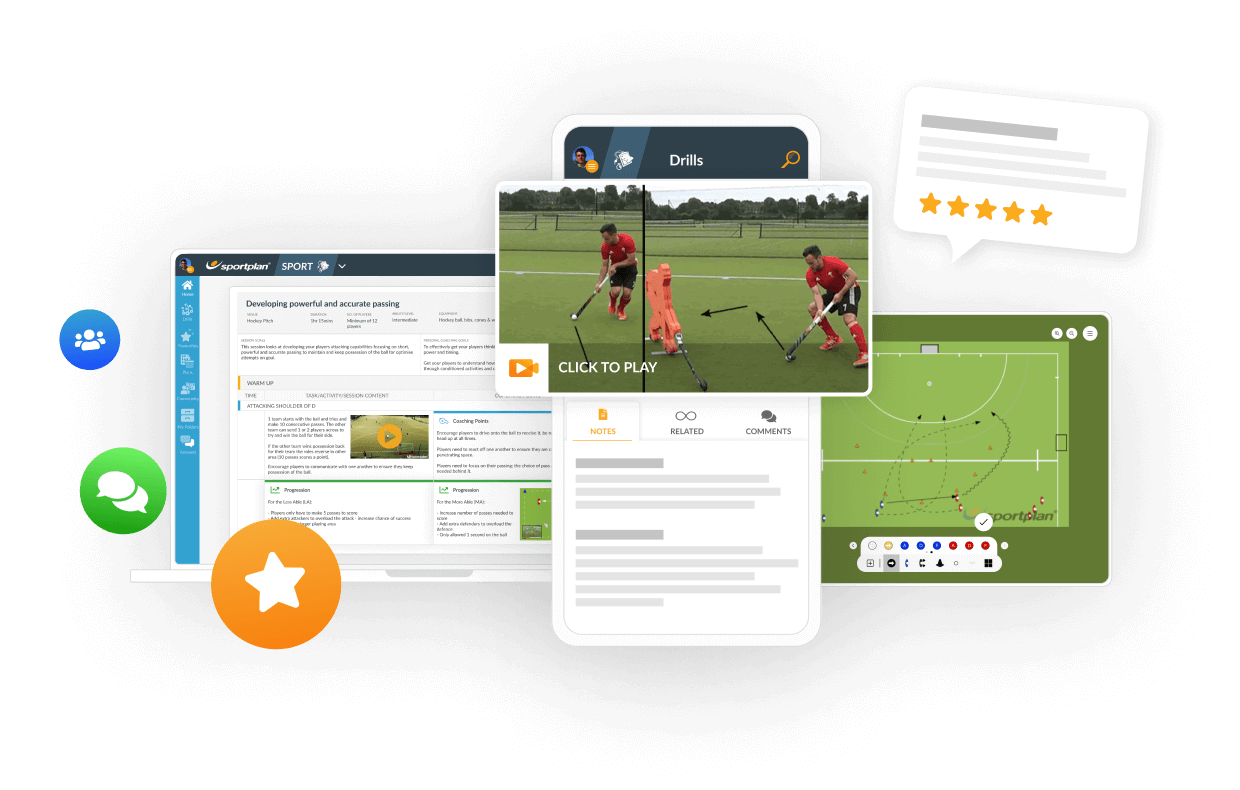Looking for a 6-a good side hockey formation?
I am looking for 6 a side hockey formations. We have been playing 3-1-1-1. Worked very well, however sweeper was so good, goalie never touched the ball. I want to move sweeper to goalie/ sweeper but our mid field player is too good to just play right. What to do? 2-2-1-1 or 1-3-1-1?





Hi Tanya,
I suggest you look at these progressions with your team to help your team improve their six-a side formation:
- Divide the pitch into six, using cones. The players then pass the ball from one area to another (they can move within the area - indeed, encourage it. Each player is restricted to his area. This is a good warm up and encourages players to pass with pace. The reason players crowd round the ball (the basis of good defending) is that players lack the ability to pass with pace. As soon as the ball speed goes up, the attacking players will start to spread out and the defenders will have to.
- Make sure they make a given number of passes before they shoot. You decide on their ability. Encourage the ball to go forward, backwards and sideways.
- If you have two teams out on the pitch have them play in different directions, this provides some traffic and a feel of match play. Obviously impress on players not to play through a player from the other team. In this drill attackers will be defenders and vice versa as the direction changes: this is great for young players both from a motivational and technical/tactical viewpoint.
- Now divide the pitch into 8 zones. One team only on the pitch. Six zones will be occupied, four will not. The rule is that the square ahead of the ball must be occupied, the one to each side (except on sideline) and the one behind. Decide how many passes you wish the players to complete prior to a shot. This should encourage off the ball movement but with a principle in mind.
- Now allow two players finto one zone, providing support for the ball carrier. The remaining players stick to your rule of player ahead, player behind and one to each side.
- Add the opposition. They are restricted to one defender per zone. Therefore there should always be a 2 v 1 in the box where the ball is. One hopes they should be able to keep the ball for three or so passes and they will soon make progress.When opposition is introduced, one variation with weaker players is to make the player second to the ball move away 5 m and therefore give the player on the ball time and space to pass, building passing confidence.
Don't get too involved in numbers in each line. In possession, work on principles of play. In that way you gain structure but are not too restrictive as to exactly where they are allowed to go; so your right midfield will have more freedom, but equally, not be allowed to run all over the place either. Running all over the place doesn't help a players development in the long term, as eventually they will be part of a structure with a designated role.
The same goes for the defending, to a certain extent you have to be guided by your opponent's shape. Work on the key principles of defending.
JAR
Hi Tanya,
I suggest you look at these progressions with your team to help your team improve their six-a side formation:
- Divide the pitch into six, using cones. The players then pass the ball from one area to another (they can move within the area - indeed, encourage it. Each player is restricted to his area. This is a good warm up and encourages players to pass with pace. The reason players crowd round the ball (the basis of good defending) is that players lack the ability to pass with pace. As soon as the ball speed goes up, the attacking players will start to spread out and the defenders will have to.
- Make sure they make a given number of passes before they shoot. You decide on their ability. Encourage the ball to go forward, backwards and sideways.
- If you have two teams out on the pitch have them play in different directions, this provides some traffic and a feel of match play. Obviously impress on players not to play through a player from the other team. In this drill attackers will be defenders and vice versa as the direction changes: this is great for young players both from a motivational and technical/tactical viewpoint.
- Now divide the pitch into 8 zones. One team only on the pitch. Six zones will be occupied, four will not. The rule is that the square ahead of the ball must be occupied, the one to each side (except on sideline) and the one behind. Decide how many passes you wish the players to complete prior to a shot. This should encourage off the ball movement but with a principle in mind.
- Now allow two players finto one zone, providing support for the ball carrier. The remaining players stick to your rule of player ahead, player behind and one to each side.
- Add the opposition. They are restricted to one defender per zone. Therefore there should always be a 2 v 1 in the box where the ball is. One hopes they should be able to keep the ball for three or so passes and they will soon make progress.When opposition is introduced, one variation with weaker players is to make the player second to the ball move away 5 m and therefore give the player on the ball time and space to pass, building passing confidence.
Don't get too involved in numbers in each line. In possession, work on principles of play. In that way you gain structure but are not too restrictive as to exactly where they are allowed to go; so your right midfield will have more freedom, but equally, not be allowed to run all over the place either. Running all over the place doesn't help a players development in the long term, as eventually they will be part of a structure with a designated role.
The same goes for the defending, to a certain extent you have to be guided by your opponent's shape. Work on the key principles of defending.
JAR







